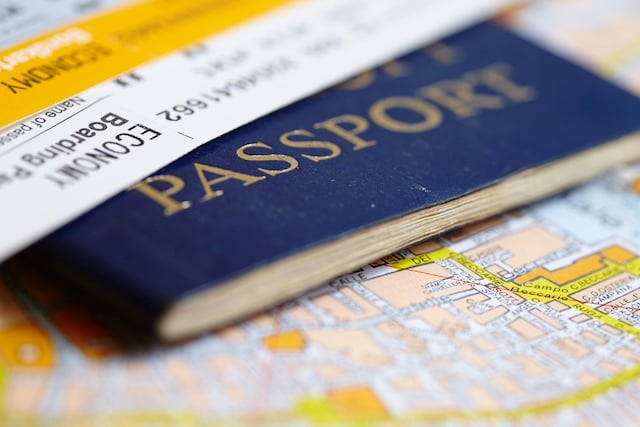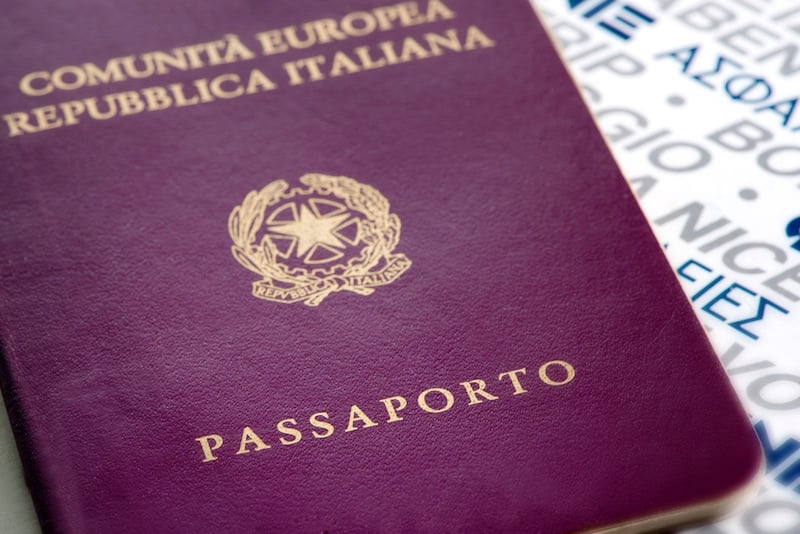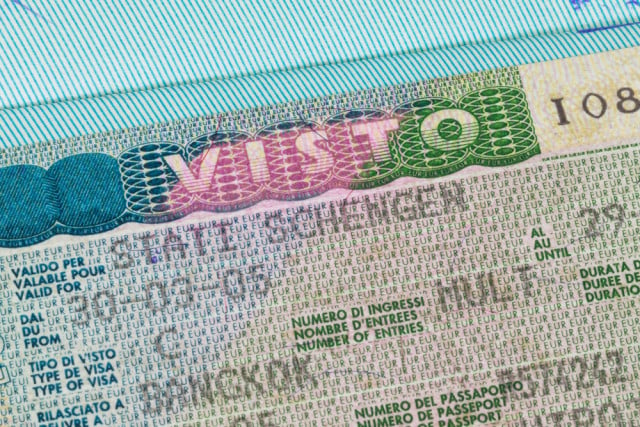How can American citizens work in Italy?

Americans have to fight through a quagmire of bureaucracy to get the right to work in Italy. The Local spoke to Paolo Zagami, an immigration lawyer at Zagamilaw in Rome, to find out how others can get through the process as painlessly as possible.
Americans – or anyone else from outside the European Union – are unable to just pack up and land in Italy for a slice of la dolce vita.
They require a work permit or visa, rules for which have grown tighter in recent years as the Italian authorities tighten restrictions to stem unemployment.
In fact, the difficulty of obtaining a visa, coupled with an impatience to fulfil their dream, drives many Americans to arrive in Italy without one.
READ ALSO: 'What I wish I'd known': An American's advice on getting residency in Italy

Photo: DepositPhotos
Zagami says that Americans often encounter “problems, misunderstandings and excessive delays” when applying to work in Italy.
But he warns that those who ignore the paperwork are not only breaking the law, but also putting themselves in a vulnerable position should they fall ill or need police assistance.
Know your quotas
Americans can only obtain a work permit in Italy through sponsorship from an Italian company or a foreign corporation doing business in Italy.
All paperwork must be filed by the employer. This starts with keeping an eye out for the publication of the Decreto flussi or ‘Flow Decree’, which stipulates Italy’s entry quotas from any given country for the year and is usually published between January and April.
In 2019 Italy set a quota of 30,850 work permits for non-EU nationals, 18,000 of them for seasonal work in tourism or agriculture and 12,850 for non-seasonal or self-employment (including people converting an existing residency permit into a work permit).
READ ALSO:
-
Italy grants fewer and fewer foreign workers residency
-
These are the thousands of job vacancies that Italy can't fill
-
Job-hunting in Italy: The Italian words and phrases you need to know
The total quota has remained stable since 2016, though the number of permits actually granted to non-EU workers has plummeted over the past decade. In 2017, the most recent year for which official data is available, Italy issued 2,802 permits to workers from the US, more than any other country.
Certain jobs are exempt from the quota system, including university professors, translators, interpreters and some roles in the performing arts. Therefore, Zagami says, it is important to check if and how you might be affected.
It is then crucial for the sponsor to begin the visa application procedure as soon as possible after the publication of the quota list, because most quotas are filled within a few days. Any applications arriving after the quota is filled, or which are completed incorrectly, are rejected with no chance of appeal.
What to do before you leave the US...
The Italian employer must then lodge an application for the work permit with the Central Immigration Office (Sportello Unico). If successful, the applicant will be issued with a no-impediment (nulla osta) document. This functions as a guarantee that the sponsor will enter into a contractual working relationship with the American employee-to-be.
In some professions, employers must also apply to the provincial employment office (Ufficio Provinciale del Lavoro e della Massima Occupazione) in their city by submitting evidence that there is nobody qualified for the position offered available in the local labour market. Although rare, it is possible for the authorities to suggest the employment of an EU citizen in their place, Zagami says.
He says one of the main reasons Americans experience difficulties is that “many employers are unwilling to go through the necessary procedure, maybe because of the slow and meticulous Italian bureaucracy, or also because of the set quotas”.
FOR MEMBERS: How to become Italian: A guide to getting citizenship

Photo: DepositPhotos
For freelancers or those hoping to work independently, the process is slightly different. Workers must apply for the visa independently and receive the no-impediment document from the local police headquarters (Questura).
There are further restrictions on the number of freelancers that may enter Italy from a certain country or nationality in any given year, and freelancers must also prove they have a proper income and adequate accommodation arranged in Italy.
Only once the no-impediment document is granted may an American apply for an entry visa (visto d'ingresso per motivi di lavoro) at an Italian consular office in their home city. This must be done before the American moves to Italy – Americans already in Italy have to return to the US to apply for their entry visa.
Zagami points out that while it could cause problems if Americans decide to enter the territory without a visa, it is possible to enter the country with a more easily obtainable student visa, for example, and convert this to a working one once they have found an employer in Italy – although tourist visas cannot be converted to working ones.
This procedure again involves applying to the Central Immigration Office for authorization.
... and once you get here
Within eight working days of arriving in Italy with their temporary work permit, all Americans must apply for a residency permit (permesso di soggiorno).
They also need to apply for a tax code (codice fiscale), one of the easier hurdles of Italian bureaucracy, at their local revenue agency (Agenzia delle Entrate).
READ ALSO:
-
Codice fiscale: How to get your Italian tax code
-
Surviving bureaucracy in Italy: the essential pieces of Italian paperwork
-
'If you want to move to Italy, brace yourself for things not going the way you want'
The final step is to present the signed work contract to the local employment office (Centro per l’impiego), where the application will be approved.
With the temporary permit, the tax code and the approval of the employment office, the police headquarters will finally issue the long-term work permit.
How much does it cost?
Zagami says the visa itself costs around €116, while the process can take anywhere between 30 and 120 days.

Photo: DepositPhotos
But what if the job offer falls through during the process, or an American loses their job in Italy?
Zagami advises that in these cases “it is important to look for another job immediately, because the legislation in force allows the employees to stay only six months after the loss of the former job”.
The process may be long-winded, but it is perfectly possible for Americans to come to Italy for work – as long as you've got the time, organization, patience and the necessary paperwork.
This is an updated version of an article first published in 2013.
Comments
See Also
Americans – or anyone else from outside the European Union – are unable to just pack up and land in Italy for a slice of la dolce vita.
They require a work permit or visa, rules for which have grown tighter in recent years as the Italian authorities tighten restrictions to stem unemployment.
In fact, the difficulty of obtaining a visa, coupled with an impatience to fulfil their dream, drives many Americans to arrive in Italy without one.
READ ALSO: 'What I wish I'd known': An American's advice on getting residency in Italy

Photo: DepositPhotos
Zagami says that Americans often encounter “problems, misunderstandings and excessive delays” when applying to work in Italy.
But he warns that those who ignore the paperwork are not only breaking the law, but also putting themselves in a vulnerable position should they fall ill or need police assistance.
Know your quotas
Americans can only obtain a work permit in Italy through sponsorship from an Italian company or a foreign corporation doing business in Italy.
All paperwork must be filed by the employer. This starts with keeping an eye out for the publication of the Decreto flussi or ‘Flow Decree’, which stipulates Italy’s entry quotas from any given country for the year and is usually published between January and April.
In 2019 Italy set a quota of 30,850 work permits for non-EU nationals, 18,000 of them for seasonal work in tourism or agriculture and 12,850 for non-seasonal or self-employment (including people converting an existing residency permit into a work permit).
READ ALSO:
- Italy grants fewer and fewer foreign workers residency
- These are the thousands of job vacancies that Italy can't fill
- Job-hunting in Italy: The Italian words and phrases you need to know
The total quota has remained stable since 2016, though the number of permits actually granted to non-EU workers has plummeted over the past decade. In 2017, the most recent year for which official data is available, Italy issued 2,802 permits to workers from the US, more than any other country.
Certain jobs are exempt from the quota system, including university professors, translators, interpreters and some roles in the performing arts. Therefore, Zagami says, it is important to check if and how you might be affected.
It is then crucial for the sponsor to begin the visa application procedure as soon as possible after the publication of the quota list, because most quotas are filled within a few days. Any applications arriving after the quota is filled, or which are completed incorrectly, are rejected with no chance of appeal.
What to do before you leave the US...
The Italian employer must then lodge an application for the work permit with the Central Immigration Office (Sportello Unico). If successful, the applicant will be issued with a no-impediment (nulla osta) document. This functions as a guarantee that the sponsor will enter into a contractual working relationship with the American employee-to-be.
In some professions, employers must also apply to the provincial employment office (Ufficio Provinciale del Lavoro e della Massima Occupazione) in their city by submitting evidence that there is nobody qualified for the position offered available in the local labour market. Although rare, it is possible for the authorities to suggest the employment of an EU citizen in their place, Zagami says.
He says one of the main reasons Americans experience difficulties is that “many employers are unwilling to go through the necessary procedure, maybe because of the slow and meticulous Italian bureaucracy, or also because of the set quotas”.
FOR MEMBERS: How to become Italian: A guide to getting citizenship

Photo: DepositPhotos
For freelancers or those hoping to work independently, the process is slightly different. Workers must apply for the visa independently and receive the no-impediment document from the local police headquarters (Questura).
There are further restrictions on the number of freelancers that may enter Italy from a certain country or nationality in any given year, and freelancers must also prove they have a proper income and adequate accommodation arranged in Italy.
Only once the no-impediment document is granted may an American apply for an entry visa (visto d'ingresso per motivi di lavoro) at an Italian consular office in their home city. This must be done before the American moves to Italy – Americans already in Italy have to return to the US to apply for their entry visa.
Zagami points out that while it could cause problems if Americans decide to enter the territory without a visa, it is possible to enter the country with a more easily obtainable student visa, for example, and convert this to a working one once they have found an employer in Italy – although tourist visas cannot be converted to working ones.
This procedure again involves applying to the Central Immigration Office for authorization.
... and once you get here
Within eight working days of arriving in Italy with their temporary work permit, all Americans must apply for a residency permit (permesso di soggiorno).
They also need to apply for a tax code (codice fiscale), one of the easier hurdles of Italian bureaucracy, at their local revenue agency (Agenzia delle Entrate).
READ ALSO:
- Codice fiscale: How to get your Italian tax code
- Surviving bureaucracy in Italy: the essential pieces of Italian paperwork
- 'If you want to move to Italy, brace yourself for things not going the way you want'
The final step is to present the signed work contract to the local employment office (Centro per l’impiego), where the application will be approved.
With the temporary permit, the tax code and the approval of the employment office, the police headquarters will finally issue the long-term work permit.
How much does it cost?
Zagami says the visa itself costs around €116, while the process can take anywhere between 30 and 120 days.

Photo: DepositPhotos
But what if the job offer falls through during the process, or an American loses their job in Italy?
Zagami advises that in these cases “it is important to look for another job immediately, because the legislation in force allows the employees to stay only six months after the loss of the former job”.
The process may be long-winded, but it is perfectly possible for Americans to come to Italy for work – as long as you've got the time, organization, patience and the necessary paperwork.
This is an updated version of an article first published in 2013.
Join the conversation in our comments section below. Share your own views and experience and if you have a question or suggestion for our journalists then email us at [email protected].
Please keep comments civil, constructive and on topic – and make sure to read our terms of use before getting involved.
Please log in here to leave a comment.